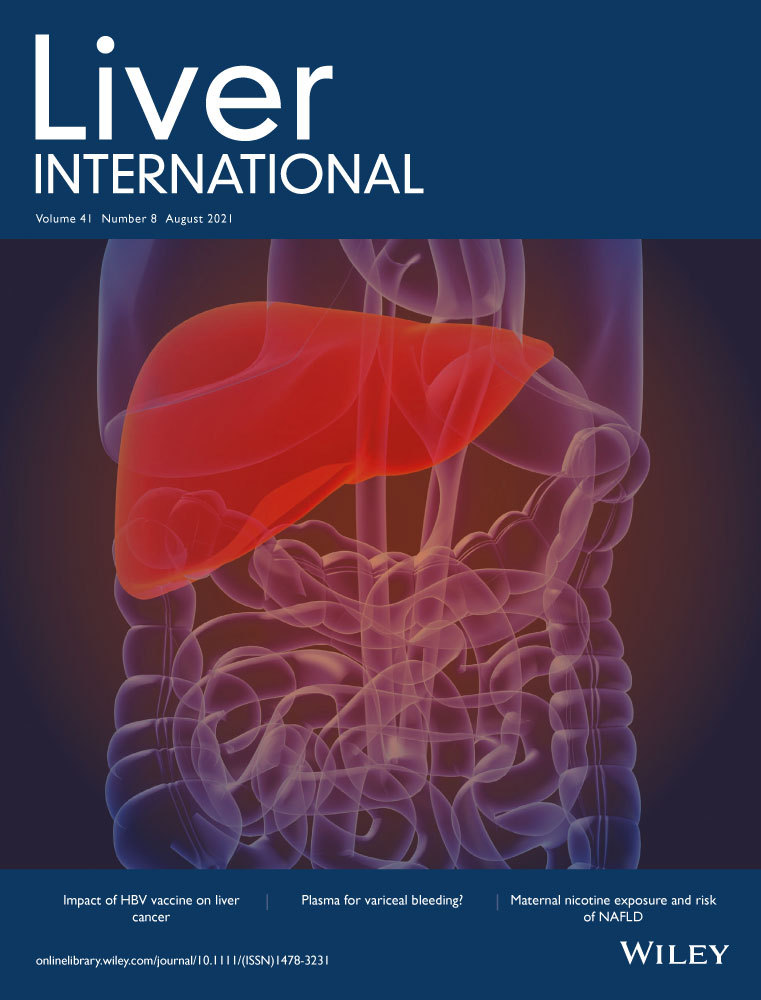Chronic hepatic involvement in the clinical spectrum of A20 haploinsufficiency
Samuel Deshayes and Céline Bazille contributed equally to this study
Funding information
This research did not receive any specific grant from funding agencies in the public, commercial, or not-for-profit sectors.
Handling Editor: Ana Lleo
Abstract
Background & Aims
Secondary to tumour necrosis factor-alpha induced protein 3 (TNFAIP3) mutations, A20 haploinsufficiency (HA20) is a recently described autoinflammatory disease with clinical features similar to those of Behçet's and Crohn's diseases but with a constantly expanding clinical spectrum. Here, we describe HA20 liver involvement in three new patients from the same family.
Methods
We retrospectively assessed clinical, biological and/or histological findings for eight patients over three generations of the same family with heterozygous mutations in the TNFAIP3 gene (c.259C > T, p.Arg87*).
Results
The eight patients exhibited the following: aphthous ulcers (8/8, bipolar in 7), autoimmune features (6/8, including 5 with definitive autoimmune disease diagnoses, ie, type I diabetes, Hashimoto thyroiditis, pernicious anaemia, and/or 5 with antinuclear antibodies ≥320), pustulosis/folliculitis (5/8), abdominal pain (4/8), arthralgia (3/8), enlarged cervical lymph nodes (3/8) and pericarditis (1/8). In addition, three patients (twin sisters and their grandmother aged 23 and 70 years, respectively) exhibited persistent mild hepatic cytolysis associated with splenomegaly (n = 3), hepatomegaly (n = 1) and/or liver atrophy (n = 1) on echography. We could not detect any other causes of chronic liver diseases. Liver biopsies from three patients displayed hepatic fibrosis, hepatocyte injury and/or CD4+/CD8+ T lymphocyte infiltration, and patterns of inflammatory cells and NLRP3 or NF-κB immunostaining differed from the predominant neutrophil infiltration observed in skin or some digestive tract biopsies.
Conclusions
This study reinforces the dual involvement of innate and adaptive immunity in HA20 according to both acute and chronic injury and the organ involved and widens its clinical spectrum to include chronic hepatic involvement.
CONFLICT OF INTEREST
The authors declare no conflicts of interest.
Open Research
DATA AVAILABILITY STATEMENT
Data available within the article and its supplementary materials.




